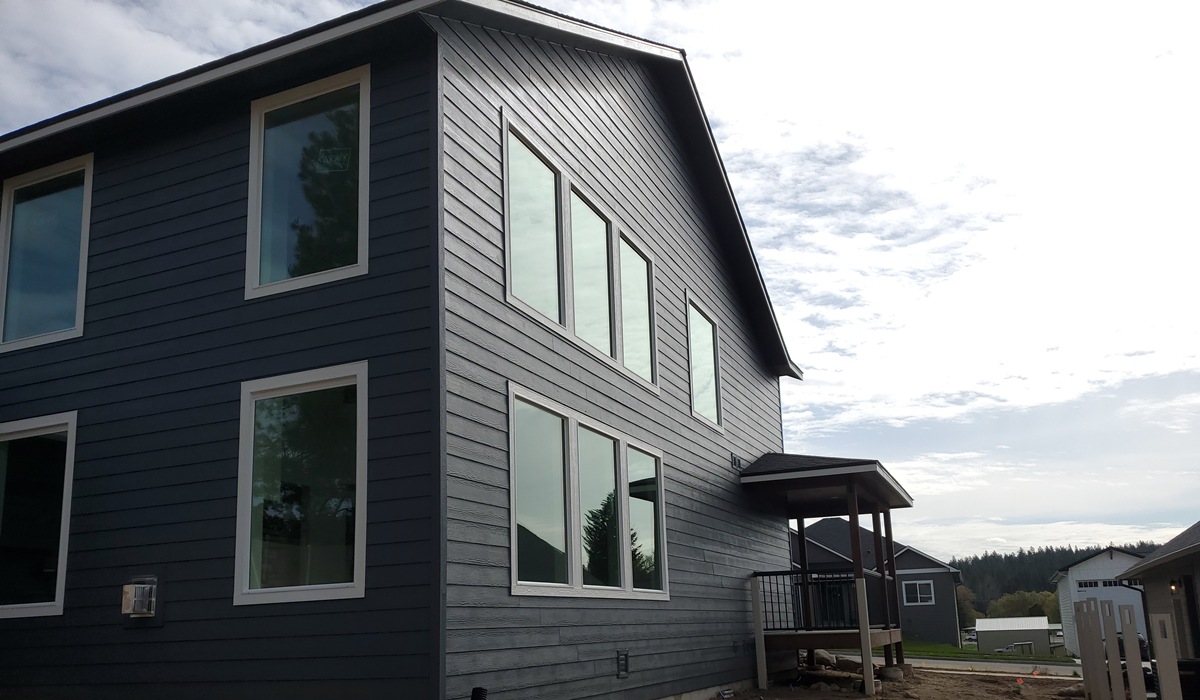If you’ve been Googling “when to repaint your home exterior,” chances are your house might be due for a facelift. Exterior house painters know that keeping your home looking its best isn’t just about curb appeal—it’s about protecting your investment. So how do you know it’s time to break out the brushes (or call in the pros)? Let’s get into the nitty-gritty.
Key Takeaways:
- Most homes need exterior paint every 5 to 10 years.
- Climate, materials, and previous paint jobs affect timing.
- Signs like fading, peeling, and mildew signal it’s time to repaint.
- Routine maintenance can extend the life of your paint job.

What Impacts How Often You Should Repaint?
There’s no one-size-fits-all answer, but several key factors influence your exterior painting schedule:
1. Material Matters
Every exterior material weathers differently, so it’s important to know what you’re working with before setting a timeline. Here’s a breakdown of common materials and how often they typically need painting:
- Wood siding: Typically needs painting every 3–7 years, or staining every 4 years.
- Stucco: Usually holds up for 5–6 years.
- Aluminum siding: Can last 5 years before needing a touch-up.
- Brick: Rarely needs repainting unless it’s previously been painted.
2. Your Local Climate
Homes in areas with lots of sun, humidity, or harsh winters will see paint wear out faster. UV rays fade color, while moisture can cause cracking or mildew. In places like Spokane, Washington, the climate presents a unique mix of challenges.
With its hot, dry summers and cold, snowy winters, exterior paint faces year-round stress. The intense summer sun can bleach colors and dry out surfaces, while freezing temperatures and snow in winter can lead to cracking and flaking. For Spokane homeowners, this means keeping a close eye on your home’s exterior and planning for more frequent touch-ups or full repaints to maintain its appearance and integrity.
3. Quality of Previous Paint Job
If exterior house painters used high-quality paint and proper prep methods, your paint job could last significantly longer. Quality prep includes thorough cleaning, scraping off old paint, sanding surfaces smooth, caulking gaps, and applying a primer when needed. The choice of paint also matters—premium exterior paints have better binders and pigments, offering greater durability, color retention, and resistance to weather extremes.
On the other hand, if cheap paint was used or if the surface wasn’t properly prepped, the paint is more likely to fail prematurely. You might notice peeling, cracking, or fading much sooner, requiring another costly repaint before you expected it.
Clear Signs It’s Time to Repaint
Not sure when to repaint your home exterior? Look for these warning signs:
- Fading: A dull or washed-out look means UV damage. Sunlight, especially in exposed areas, breaks down the chemical bonds in paint, causing it to lose its vibrancy. If your once-bold siding now looks faded and pale, it’s time to think about a refresh.
- Peeling or cracking: Paint that’s peeling away exposes the surface to damage. Once paint starts to crack or flake, it creates an entry point for water, leading to rot, rust, or other structural issues. It’s a sure sign the protective layer has failed.
- Chalking: A powdery residue on your hand after touching the wall is a sign of paint breakdown. This chalking effect usually means the paint’s binder has deteriorated, which can reduce adhesion and lead to premature wear.
- Mildew or mold: Visible dark spots or green patches aren’t just ugly—they can be harmful. These growths thrive in damp, shaded areas and indicate that moisture is getting trapped under or behind your paint. Left untreated, it can spread and damage the underlying structure.

How to Extend the Life of Your Paint Job
If you’ve recently had your house painted or want to stretch a few more years out of your current paint job, here are some tips:
- Power wash annually: Removes dirt, mildew, and debris. An annual pressure wash clears away pollutants, mold, and grime that can slowly break down your paint and cause discoloration. It’s one of the easiest ways to keep your paint job looking fresh year-round.
- Inspect for damage: Check for wood rot, cracks, or leaks that can ruin paint. Make it a habit to do a seasonal walk-around of your home. Identifying soft spots, peeling sections, or moisture-damaged trim early can prevent major repairs and ensure your paint continues to protect your home.
- Trim nearby plants: Shrubs and vines can trap moisture against the siding. Overgrown greenery not only hides problem areas but also increases the chances of moisture retention and pest infestations. Keeping plants trimmed back at least a foot from your siding helps your home breathe and stay dry.
- Touch up early: Catching and fixing small chips or cracks early prevents bigger issues later. A little touch-up paint can go a long way. Addressing wear and tear promptly helps maintain your home’s exterior seal and avoids the need for a full repaint sooner than necessary.
How Exterior House Painters Can Help
Professional exterior house painters don’t just apply a fresh coat of paint—they prep the surface, repair damage, and recommend the right materials for your home and climate. While DIY painting might seem cheaper, hiring pros often saves time and ensures a longer-lasting result.
When asking yourself when to repaint your home exterior, consider getting a consultation. Many painters offer free estimates and can give you an honest opinion on whether it’s time to paint or not.
Final Thoughts
Knowing when to repaint your home exterior is crucial for keeping your home protected and beautiful. Regular maintenance, awareness of your local conditions, and help from trusted exterior house painters can keep your home in top shape year-round.
Need an expert opinion or ready to schedule a repaint? Contact Kings Custom Finishes Inc at 509-260-8496 for a free consultation and personalized recommendations.

